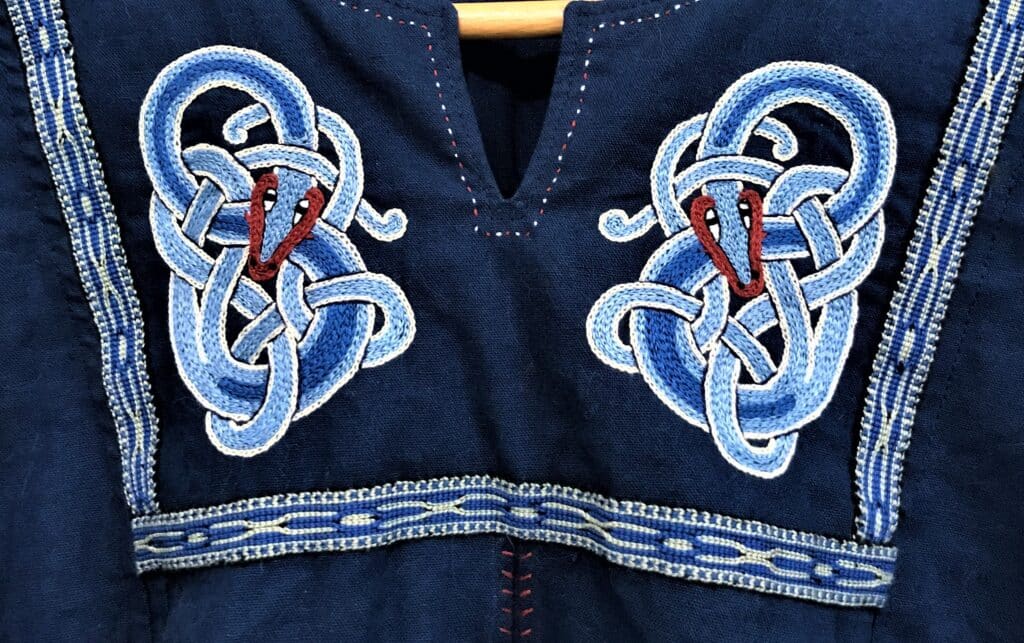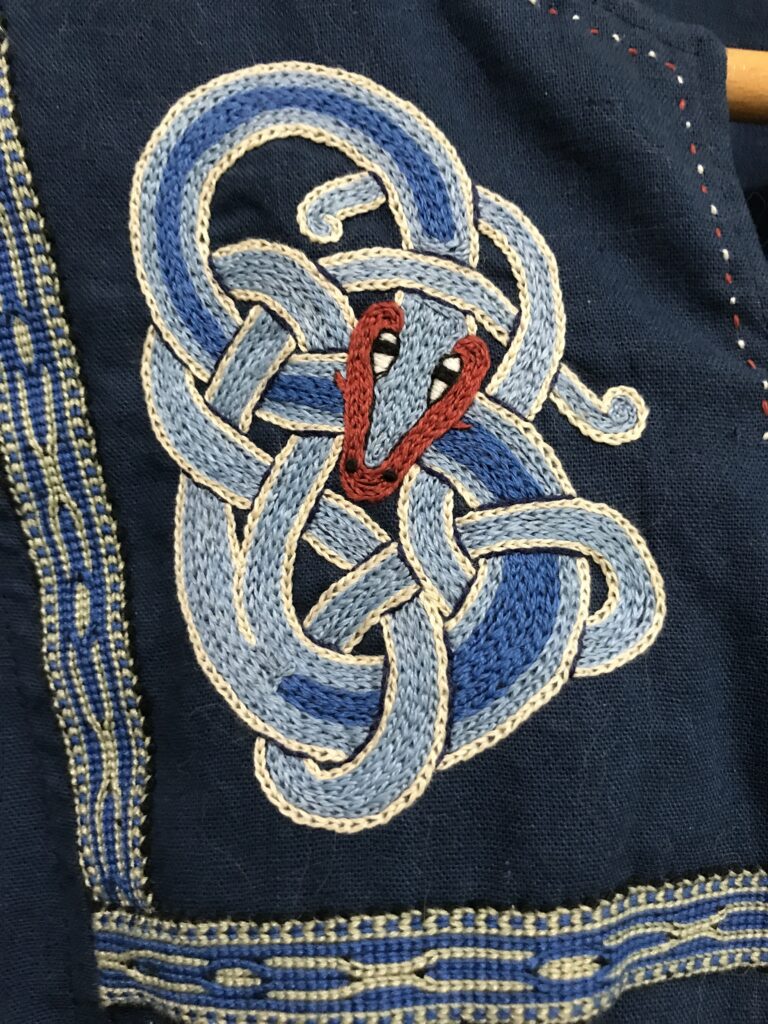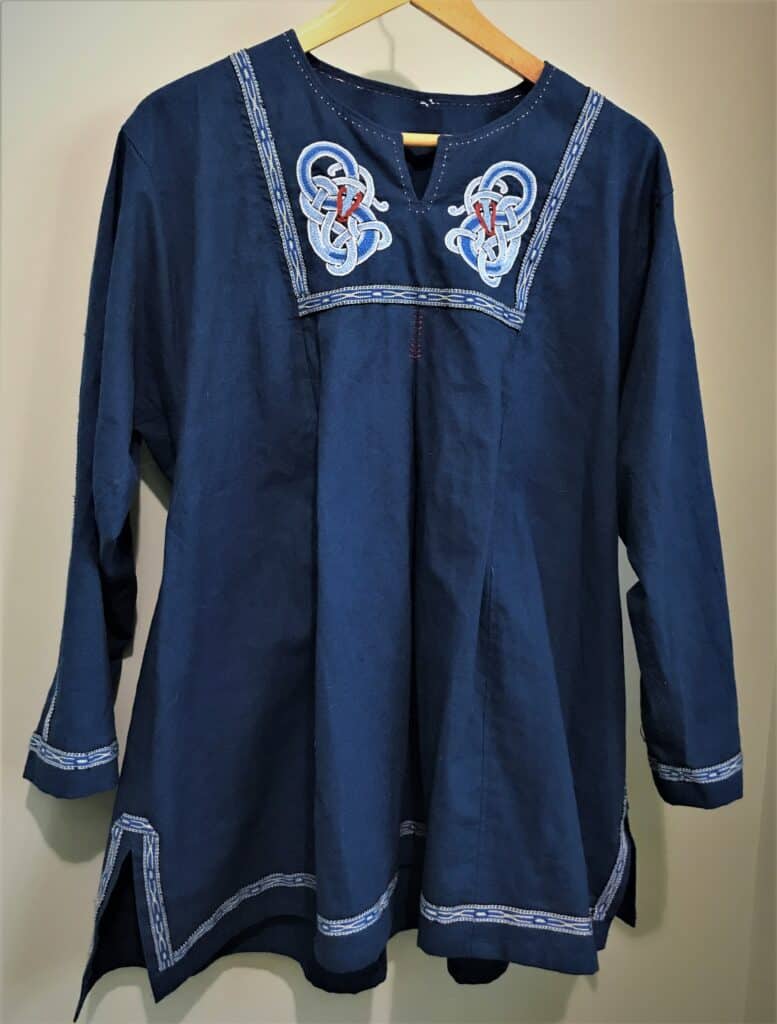
These days, when most folks want clothing, they order it on-line or buy it ready-made from their favorite chain store. The selection is limited in color and size, and materials and manufacturing are often shoddy, producing generic garments that don’t last long. However, the art of sewing clothing was something I grew up with, a family legacy. My maternal grandmother was a master seamstress and created wedding and ball gowns for many of the daughters of the region’s premier families. As a child, I watched her make and adorn women’s suits and dresses, create hats, sew gloves and tailor men’s suits. My mother learned from her and put her skills to work as a way to stretch the tight budget she had to get by on. Until I went away to college, she made most of my clothing, including pajamas, dresses for school, and play clothing. From her, I learned to lay out and modify a pattern, cut out the fabric, and pin the pieces together prior to sewing them using her 1954 Singer, a substantial machine I use to this day.
Along with learning to sew, I also learned hand embroidery and during the early 1970s, created and embroidered elaborate and fanciful garments which I sold in boutiques. By my early twenties, I was sewing historically accurate and detailed recreations of medieval clothing as part of a reenactment group for my own use and for others. Linen chemises, tailored woolen tights, elaborate renaissance court gowns – nothing daunted me. During this same period I supported myself as a gold and silversmith, a profession I continued for fifty years. My creation of unique and expressive garments and emotive jewelry drew me into the blossoming Wearable Art movement.
At this same time in my life, I began to explore the spiritual traditions of pre-colonial Europe, Eurasia and Mesoamerica, noting that many pre-colonial cultures valued personal adornment and individual expression, going so far as to hold these things as sacred. As a child, I had been fascinated by the magnificence of Native American and Aztec ceremonial regalia, and by the sacred costumes of indigenous healers and shamans from diverse cultures in Africa, Asia, and Polynesia. I gradually learned the art of creating with intentions and enchantment, making jewelry, tools and ritual ware that was vibrant, potent, and which would support the practitioner.

During my apprenticeship in Northern Tradition shamanism, I learned that many forms of fiberwork can be used magically and found that embroidery and hand sewing, for me, seemed to especially hold my intentions. Giving my life over to service as a healer of humans, nature and the land, it became increasingly important that I create clothing for myself to support my work. I find it increasingly difficult to wear commercially made garments and prefer to work with natural fiber fabrics such as cotton, linen, rayon and certain wools. My embroidery is done using one to three strands of cotton floss in a variety of stitches including chain, outline, satin, herringbone, and others. The designs are often inspired by historical ones and are chosen for the energy they will hold and impart to the garment or object as I wear or use it. One of my recent posts focused on an altar cloth I created. Having finished that, I decided to tackle making a dark blue linen tunic for winter wear.

This garment is based on a simple Norse man’s tunic, loose through the body with a fitted yoke and sleeves and underarm gussets to add ease. The yoke bears a pair of twining dragons, symbols of power and healthy boundaries, and narrow cotton tablet-woven trim marks the hem, sleeve cuffs and yoke. While not as potent as my heavy leather shaman’s coat, this enspirited garment offers me a sense of support and empowerment. Even more importantly, it reinforces my sense of Self, as clothing should.
I’ll never be an ordinary grandma dressed in polyester slacks and blouse and wearing sandals, and that’s ok. Instead, I’ll walk through my days finding strength and delight in my adornment. Stares don’t faze me anymore!